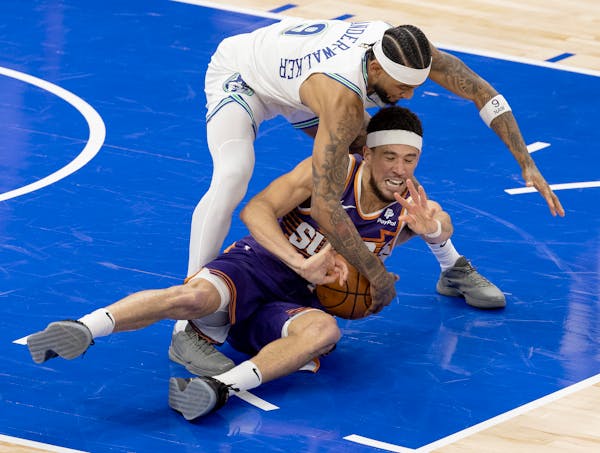An argument over how much fat there should be in a quarter-pound hamburger marks the ironic history of one of the most cataclysmic events of the last half-century in Minneapolis: the 1970 anti-Vietnam occupation of Dinkytown, now almost forgotten.
Opposition to the war in Vietnam by students all over the country dated to 1965. It had already boiled over with the Chicago riots of 1968. Students here in Minneapolis, friends of mine, had bussed to Chicago's Democratic National Convention to support Minnesota's Sen. Eugene McCarthy, the antiwar candidate, disregarding reports of potential riots and police stockpiling riot gear.
Here in the University of Minnesota's historic Dinkytown neighborhood, students and community organizers were gearing up for a standoff that reached its unexpected apex May 6, triggered by the Kent State shootings, 50 years ago Monday — a confrontation prompted by President Richard Nixon's order four days earlier for U.S. forces to invade Cambodia, escalating peace protests nationwide.
In the 13 seconds of National Guardsmen firing at Kent State, four students were killed.
In the meantime, a clone of the McDonald's Big Mac — "the Barn Buster" — was about to establish its culinary prestige among the hungry denizens of Dinkytown, near the intersection of SE. 4th and 14th streets. The tasty mouthful had been created by Red Barn Inc., with one Robert G. Lafferty, a corporate vice president of the national chain directing operations here. His role came to be seen as analogous to that of America's Gen. William Westmoreland in Vietnam.
The Red Barn chain (with operations in 14 states, headquartered in Ohio) was perceived as a corporate invader — yes, even into such a small constabulary as Dinkytown.
Perhaps all this involved a conflation of motives. But for whatever reasons, half a century ago thousands of anti-establishmentarians roamed the streets of Dinkytown continuously for more than 40 days and 40 nights, until riot police were called in. (The duration of the unrest set a record of sorts, well outlasting similar Berkeley, Columbia and Madison confrontations of the era.)
"Save Dinkytown" and "Ban the Barn" flyers had first appeared, ghostlike, on main drag 4th St. telephone poles just about the time the snow was melting in late February. The entire community — 44 merchants, the Southeast Neighborhood Association, the DFL Ward Club and the PTA — in a class-action suit drew up a petition calling for Red Barn to withdraw its plans to demolish a handful of stores along the street, in favor of a large Red Barn structure serving its quick daily fare. (Two other national chains, McDonald's and Burger King, were already serving fast-food lovers nearby.)
Negotiations kept dragging through the spring as the emptied buildings awaited demolition. An order from the city to bring in the bulldozers needed proper clearance. Into the doomed stores came hosts of squatting students to occupy the premises.
During April and early May, a confederacy of students managed to live in the "People's Hotel," dine at a makeshift "People's Diner" (with a free daily menu of donated and moonlight-requisitioned food), set up a hospital unit, a meeting space and a phone network. Despite persistent rumors of imminent police action, the lively society daily attracted citywide tourists and U students who either skipped classes or held campus sit-ins.
Pressure to halt demolition climaxed with Kent State.
Then, at 4 a.m. May 6, came the order from police and Mayor Charles Stenvig to bring in the armed tactical squad, arrest the occupying students, clear the street and bulldoze the buildings.
"Put away the guns, put away the guns!" people yelled during the predawn raid. "We don't want another Kent State! "
Not to be outdone, however, the occupiers immediately went to work building a "People's Park" and invited Loyce Houlton's nearby Minnesota Dance Theater to stage performances.
The same day, the occupiers moved across campus to invade Mr. Lafferty's already established Stadium Village Red Barn restaurant. Demonstrators refused to leave tables. An anonymous protester drove his car through the glass window fronting Oak Street early the next morning. Arrests for "unlawful assembly" ensued as officers in riot gear arrived amid a crowd estimated at l,000.
Charges against demonstrators were dismissed by the end of May.
The community atmosphere and "architectural integrity" of Dinkytown was preserved. Lafferty's planned designs were changed and a Red Barn restaurant, modest townhouse style, was later erected in midtown Minneapolis.
Today? A different Dinkytown. No longer the students, hippies, neighbors congregating in a mélange of coffeehouse, ma-and-pa grocers, scattered bookstores. Now, gentrified high-rises, smorgasbords and diners, and a Target replacing former Marshall High. You will find a far different clientele, along with many foreign student newcomers, all with seemingly little awareness of the 1970 sidewalks underfoot.
Al Milgrom is producer and director of "The Dinkytown Uprising," a 2015 feature documentary. He can be reached at almilgrom@yahoo.com.
Protect kids online

Here's how I'd broadly frame the environment that led to my firing as a teacher
Get rid of Minnesota's precinct caucuses, go to primary elections up and down the ballot


